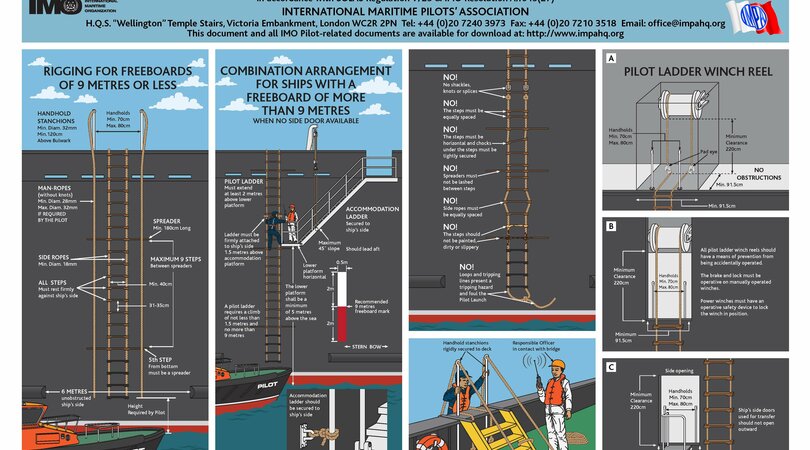Our new NorthStandard site is now live. There will be no new content or updates added to this site. For the latest information, please visit our new site north-standard.com.
Press Article: One rung at a time - Pilot ladder safety
Crew must be properly trained on the use, storage and maintenance of pilot ladders to avoid serious injuries to pilots

Pilot ladders are critical equipment for ensuring the safety of personnel who use them to board and disembark vessels. The incorrect rigging of pilot ladders can result in severe injury or tragic loss of life; the penalties imposed in certain jurisdictions may lead to considerable fines and/or imprisonment of the ship’s crew.
In recent years, the Standard Club has seen numerous pilot ladder incidents. Within policy years 2014- 2020, the club dealt with 27 incidents in which pilot ladders were involved, and personnel were either injured (often seriously) or lost their lives.
In a February 2021 TradeWinds article, the International Maritime Pilots’ Association (IMPA) voiced its frustration at many vessel operators not complying with safety regulations for pilot ladders, with old or overused ladders being used or being incorrectly rigged by the vessel’s crew. Most non- compliances were due to pilot ladder steps not being horizontal, or ladders not being fully secured against a ship’s hull.
In the same article, the IMPA noted instances where pilots, having initially refused to use a non-compliant ladder, were then offered a compliant ladder which the seafarers had kept aside for Port State Control inspections. Such a practice to reduce expenses only compromises safety, risks lives and can lead to very expensive claims. SOLAS Chapter V/Regulation 23, deals specifically with pilot transfer arrangements as does IMO Resolution A.1045(27) and amendment A.1108(29). IMO MSC.1/Circ.1428 and its Annex illustrates required boarding arrangements for pilots as seen in the graphic.
The rigging of the pilot ladder and embarkation of the pilot are the responsibilities of the ship’s staff and a responsible officer should supervise its rigging while having a means of communication with the bridge when the pilot embarks/disembarks. The rigging of the pilot ladder may be delegated to an experienced seaman, but the final responsibility remains with the duty officer. The company is responsible for training the crew so they are proficient in rigging the pilot ladder, and the utmost importance must be given to this operation.
Adhering to rules
In accordance with SOLAS require- ments, the appliance used for pilot transfer shall be kept clean, properly maintained and stowed, and shall be regularly inspected to ensure that it is safe to use. The appliance shall be solely used for the embarkation and disembarkation of personnel.
Safe and convenient access to and egress from the ship must be provided to the pilot. The pilot ladder must be positioned and secured such that (among other things):
- It is clear of possible discharges (for example from scuppers) from the ship.
- It is within the parallel body length of the ship and, as far as practicable, within the mid-ship half length of the ship.
- Each step rests firmly against the ship side.
- Due allowance is made for all conditions of loading and trim of the vessel, and for an adverse list of 15°.
Combination ladders must be rigged in accordance with the specifications noted in SOLAS Chapter V/Regulation 23. The requirements for access to ships’ decks and for shipside doors are also specified in SOLAS. Mechanical pilot hoists shall not be used.
Despite the many technological advancements in the shipping industry, pilot ladder incidents do regularly occur, often resulting in serious injury and sometimes tragic fatalities.
The importance of properly rigging pilot ladders can never be underestimated. Due care, proper maintenance of equipment, a thorough understanding of SOLAS requirements and best practice, and attention to detail when rigging the ladder would greatly assist with minimising such incidents. Crew training on the proper rigging of pilot ladders would also go a long way in preventing such incidents from occurring.
This article was contributed to the latest edition of The Sea newspaper, the leading publication for seafarers, linked below.
Click here to sign up to receive issues of The Sea directly to your inbox.
Category: Loss Prevention

